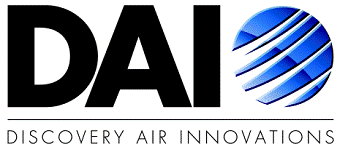
Brief From Discovery Air Innovations
FIXED WING SEARCH AND RESCUE (FWSAR) ALTERNATIVE SERVICE DELIVERY - A BETTER DEAL FOR CANADA
Executive Summary
Following a study conducted by the National Research Council, the Government of Canada has requested inputs from Canadian Industry on the viability of alternative service delivery (ASD) for FWSAR. One of the main advantages associated with an alternative delivery of service is a significant reduction in the total cost of service and the avoidance of a typically large capital expenditure associated with a Major Crown Project (MCP). If an ASD is adopted it is estimated the total cost of the service could be reduced by $CAD700,000,000 over the In Service Support (ISS) period of 20 years. Additional savings of a similar magnitude could also be realized through the rationalization of DND personnel.
An ASD solution also presents the opportunity to improve the level of SAR service in Canada, particularly in Canada’s northern regions. This is particularly relevant in light of Canada’s commitment to enhancing Arctic Search and Rescue as a member of the Arctic Council, an activity that is well aligned with Canada’s Northern Strategy.
Cost Reductions
The current budget for the Fixed Wing Search and Rescue project has
been estimated at approximately $CAD 2,900,000,000. This amount is split
between aircraft acquisition costs of $CAD 1,400,000,000 and a 20 year In-Service
Support (ISS) contract worth $CAD 1,500,000,000. This does not account for the
on-going annual Operating and Maintenance costs that would not be covered by
the ISS contract, such as training and
fuel.
A straight line analysis of the proposed project cost indicates annual costs as follows:
- Aircraft Acquisition - $CAD 700,000,000/yr[1]
- ISS - $CAD 75,000,000/yr
- TOTAL - $CAD 145,000,000/yr
For comparison purposes, a Service Provider could deliver an improved level of service across four (4) Main Operating Bases for an estimated annual cost of $CAD110,000,000. This would include all aircraft acquisition costs, operating, maintenance and training costs associated with the delivery of the service. This equates to a saving of $CAD700,000,000 over the life of the program. These savings are realized through operating efficiencies, improved asset utilization and low personnel turnover.
Secondary Benefits
In addition to the reduced cost of service, an ASD solution would bring other benefits to Canada. Specifically:
- Improved level of SAR service across all regions;
- Significantly improved SAR service in Canada’s north and Arctic region
- Job creation;
- Economic development through job creation and employment of an aircraft with significant direct Canadian content;
- Reallocation of DND personnel to other strategic programs such as the Chinook and JUSTAS programs; and
- No requirement for a large upfront capital expenditure.
Recommendations
It is recommended that:
1. The Finance Committee supports the evaluation of an Alternative Service Delivery for FWSAR in Canada.
2. Canada determines a fair and transparent framework for assessing the viability of an ASD solution for FWSAR.
3. Canada defines a National Level of Service that includes the establishment of a Northern SAR base and that this National Level of Service is used as the basis of assessing the total costs associated with delivery of service.
[1] It is estimated that after 20 years of service the aircraft would require a mid-life update that amounts to a recapitalization of the fleet.